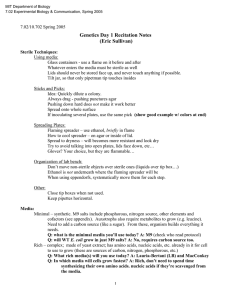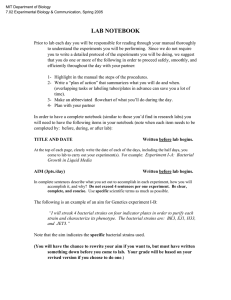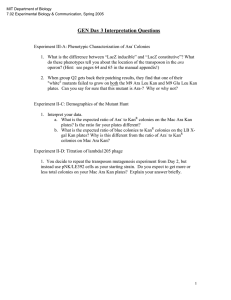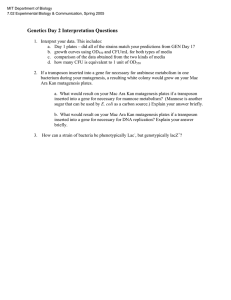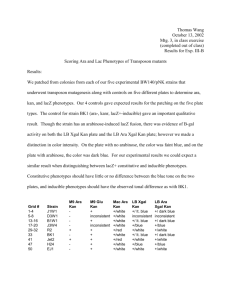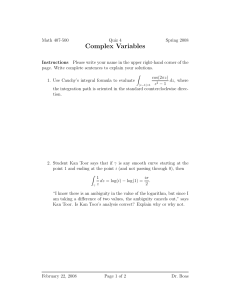GEN Day 1 Interpretation Questions (and answers)
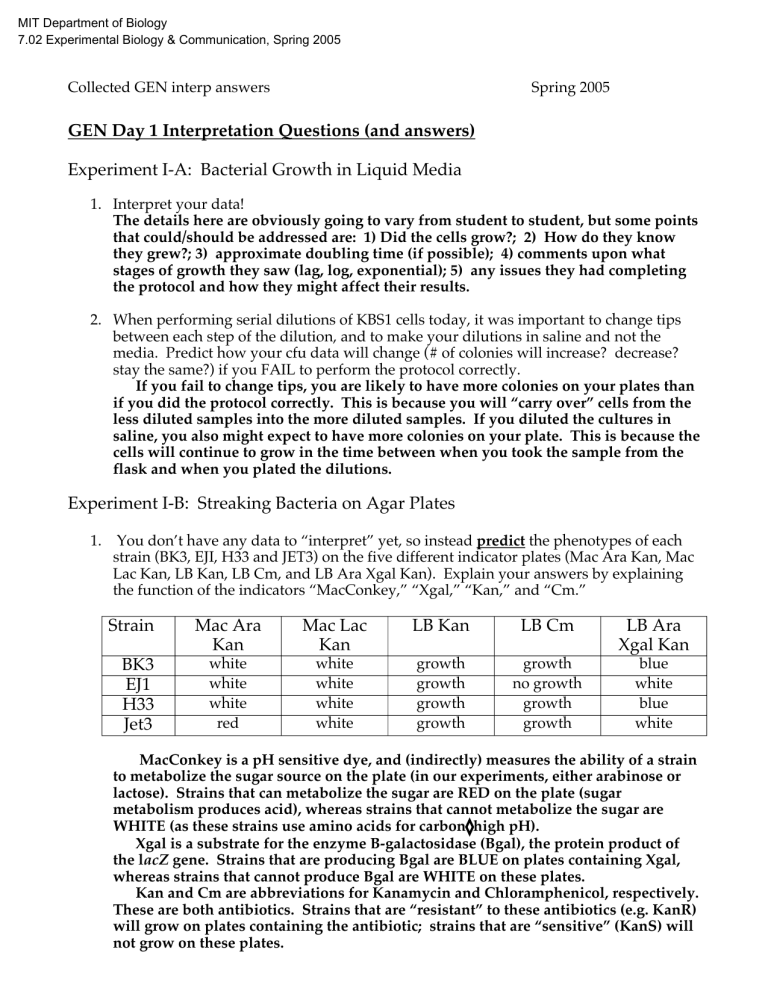
MIT Department of Biology
7.02 Experimental Biology & Communication, Spring 2005
Collected GEN interp answers Spring 2005
GEN Day 1 Interpretation Questions (and answers)
Experiment I-A: Bacterial Growth in Liquid Media
1.
Interpret your data!
The details here are obviously going to vary from student to student, but some points that could/should be addressed are: 1) Did the cells grow?; 2) How do they know they grew?; 3) approximate doubling time (if possible); 4) comments upon what stages of growth they saw (lag, log, exponential); 5) any issues they had completing the protocol and how they might affect their results.
2. When performing serial dilutions of KBS1 cells today, it was important to change tips between each step of the dilution, and to make your dilutions in saline and not the media. Predict how your cfu data will change (# of colonies will increase? decrease? stay the same?) if you FAIL to perform the protocol correctly.
If you fail to change tips, you are likely to have more colonies on your plates than if you did the protocol correctly. This is because you will “carry over” cells from the less diluted samples into the more diluted samples. If you diluted the cultures in saline, you also might expect to have more colonies on your plate. This is because the cells will continue to grow in the time between when you took the sample from the flask and when you plated the dilutions.
Experiment I-B: Streaking Bacteria on Agar Plates
1.
You don’t have any data to “interpret” yet, so instead predict the phenotypes of each strain (BK3, EJI, H33 and JET3) on the five different indicator plates (Mac Ara Kan, Mac
Lac Kan, LB Kan, LB Cm, and LB Ara Xgal Kan). Explain your answers by explaining the function of the indicators “MacConkey,” “Xgal,” “Kan,” and “Cm.”
Strain LB Kan LB Cm
BK3
EJ1
H33
Jet3
Mac Ara
Kan
white white white red
Mac Lac
Kan
white white white white growth growth growth growth growth no growth growth growth
LB Ara
Xgal Kan
blue white blue white
MacConkey is a pH sensitive dye, and (indirectly) measures the ability of a strain to metabolize the sugar source on the plate (in our experiments, either arabinose or lactose). Strains that can metabolize the sugar are RED on the plate (sugar metabolism produces acid), whereas strains that cannot metabolize the sugar are
WHITE (as these strains use amino acids for carbon ◊ high pH).
Xgal is a substrate for the enzyme B-galactosidase (Bgal), the protein product of the l acZ gene. Strains that are producing Bgal are BLUE on plates containing Xgal, whereas strains that cannot produce Bgal are WHITE on these plates.
Kan and Cm are abbreviations for Kanamycin and Chloramphenicol, respectively.
These are both antibiotics. Strains that are “resistant” to these antibiotics (e.g. KanR) will grow on plates containing the antibiotic; strains that are “sensitive” (KanS) will not grow on these plates.
